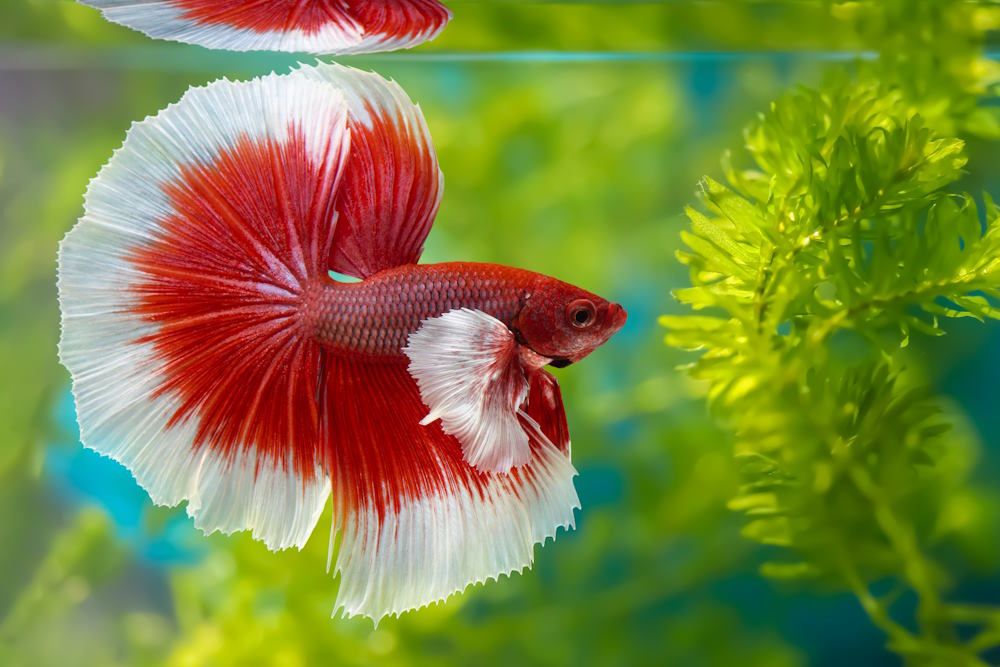Betta Fish Life-span: Just How to Ensure Your Betta Lives Longer
Betta Fish Life-span: Just How to Ensure Your Betta Lives Longer
Blog Article
Exactly How to Reproduce Betta Fish Effectively: Expert Methods and Insights for Hobbyists Wanting To Broaden Their Betta Collection
Breeding Betta fish needs a nuanced understanding of genes and ecological problems, making it important for enthusiasts to approach the process with both diligence and treatment. Producing an optimal breeding setting, choosing the right sets, and observing the intricacies of their courtship actions are fundamental actions that can significantly impact the result.
Understanding Betta Fish Genetics
Understanding the genes of Betta fish is essential for successful reproduction, as it affects attributes such as color, fin form, and habits. Betta fish show a diverse range of colors and patterns, mainly determined by their genetic makeup. The key genetics responsible for coloration include the "B" genetics for blue, "D" genetics for red, and the "C" gene for color intensity. Dog breeders can manipulate these qualities by picking details parent fish that display wanted characteristics.
Along with pigmentation, fin morphology is one more substantial facet of Betta genetics (betta fish). The sizes and shape of fins are affected by various genetics, including those that establish whether the fins are short, long, or veil-shaped. Comprehending these genetic variants aids breeders anticipate the phenotypic end results of their children
Furthermore, behavioral characteristics such as aggressiveness and territoriality can likewise be affected by genetics. These behaviors play an important role in the breeding process, as they can influence generating success and the overall personality of the resulting fry. By comprehensively comprehending these genetic concepts, breeders can make educated choices, inevitably boosting their reproduction programs and attaining preferable outcomes.
Preparing the Breeding Environment
Producing an optimum breeding atmosphere is important for the effective reproduction of Betta fish. The initial step in preparing this atmosphere is to pick a suitable reproduction tank, ideally varying from 5 to 10 gallons.
Next, consider the use of a sponge filter or an air rock to offer mild water circulation without producing strong currents that can emphasize the fish. It is vital to set up plants or breeding cones to use concealing spots and promote comfort for the lady throughout the spawning process. Floating plants, such as Java moss or water sprite, can also develop a much more native environment while facilitating bubble nest building by the male.
Prior to presenting the breeding pairs, ensure the water is conditioned and without harmful chemicals, such as chlorine or heavy metals. betta fish. Regular water changes need to be performed to keep ideal water quality, boosting the chances of successful reproduction. With these prep work in position, the reproducing setting will certainly sustain the health and well-being of both Betta fish
Selecting Reproduction Pairs
Choosing the right breeding sets is important for achieving successful Betta fish recreation. Healthy Betta fish show vivid shades, clear eyes, and energetic actions.
Personality is another essential consideration, as Betta fish are recognized for their aggressive nature. It is advisable to select a male and lady that show suitable temperaments to minimize tension throughout the breeding procedure. A calm male can urge a smoother courtship, while a woman that is too hostile might disrupt the procedure.
Genetic history additionally plays a substantial role in the quality of the children. Reproducing fish that are genetically varied have a peek here can decrease the risk of hereditary health and wellness concerns and improve the general vitality of the fry. It is useful to research the lineage of both the man and woman, concentrating on desirable traits such as fin kind, color patterns, and size.
The Breeding Refine
The breeding process of Betta fish needs cautious planning and focus to detail to ensure an effective end result. It is essential to prepare a suitable reproduction storage tank, preferably a 5-10 gallon fish tank with a temperature level preserved at 78-80 ° F. The tank ought to be outfitted with a heater, filter (preferably sponge kind to stay clear of solid currents), and plenty of water plants for the woman to conceal.
Once the environment is established, present the picked breeding set to the container, enabling them to acclimate. Observe their habits; the male will certainly display elaborate courtship routines, including flaring his fins and constructing a bubble nest. If the lady shows passion, she will certainly present upright stripes suggesting preparedness for spawning.
When the woman is responsive, the set will certainly involve in a mating accept, throughout which the male feeds the eggs. Keeping optimal water problems during this duration is crucial for the advancement of healthy Betta fry.
Taking Care Of Betta Fry

Feeding Betta fry is essential, as they require a diet high in healthy protein. They can be fed infusoria or fluid fry food, transitioning to finely crushed top quality pellets as they grow. Feed tiny parts multiple times a day to urge healthy and balanced development without overwhelming the storage tank with uneaten food.

As they mature, monitor their development very closely and divide any kind of hostile individuals to avoid damage. By supplying a nurturing setting and correct nutrition, enthusiasts can effectively raise go to these guys Betta fry right into vibrant, healthy and balanced fish, inevitably boosting their breeding endeavors.
Verdict
Successful Betta fish breeding requires careful interest to genetic choice, environmental problems, and look after the fry. By other understanding the genetics of Betta fish and preparing a suitable breeding setting, enthusiasts can boost the opportunities of creating vibrant, healthy and balanced children. Selecting compatible breeding sets and carefully keeping an eye on the courtship and spawning procedures are crucial. Offering optimal treatment for the fry guarantees their healthy and balanced development, adding to a flourishing Betta collection.
Report this page